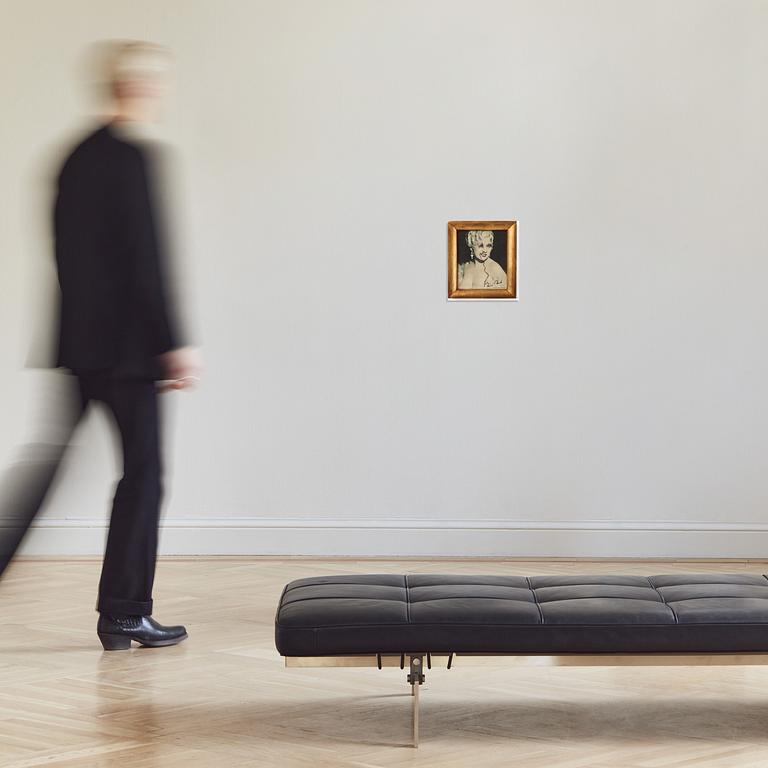Francesco Vezzoli
"Ritratto Surrealista di Mae West (l'age d'or)"
Certificate issued by Galleria Tega accompanies the work. Executed in 2007. Mixed media and collage on canvas 35 x 31 cm including the artist's frame.
Alkuperä - Provenienssi
The Artist's Collection.
Galleria Tega, Milan, acquired by the present owner at Art Basel 2011.
Muut tiedot
Mae West is an icon, movie star and sex symbol, who has appeared in Vezzoli's art before, but also in the work of several other artists. One of his own role models, Salvador Dalí, designed his “The Mae West Lips Sofa” in 1937 so that he could be symbolically encased by the lips of his Hollywood heroine. In the auction, West's idol portrait is mixed with Vezzoli's characteristic embroidered tears, collages and a thick gold frame.
Where does his fascination with these female divas come from? In 2009, the exhibition 'Dalí Dalí featuring Francesco Vezzoli' was shown at Moderna Museet in Stockholm. The curator of the exhibition, John Peter Nilsson, asked him about this:
“JPN: Tell us a bit about your obsession with aged female divas. What do they have in common other than that they are women who seem to have lost their former importance because they have grown old?
FV: Artists are divas themselves, and like actresses, they are afraid of aging. Perhaps I saw in those tearful eyes a reflection of my own fears...”
Although Vezzoli works in a range of genres and media, embroidery is one of his key characteristics. While studying at Central St. Martin's School of Art in London
he transformed 20th-century masterpieces by Mark Rothko and Josef Albers into small embroideries. On his return to Italy, he made his first series of films entitled 'An Embroidered Trilogy' (1997-99). He was inspired by famous actors who embroidered in their spare time and between takes, such as Joan Crawford, Cary Grant and Greta Garbo. In his films, he likes to have his characters, including himself, sit on furniture embroidered by Italian stars or royalty.
The diva embodies the rare, the extravagant and the exceptional. They are constantly on the border between life and theater. The contrast between a person in a position of power, with a career in the spotlight, and a person doing traditional needle and thread work is intriguing. The boundaries are softened, even those between male and female. Similarly, Vezzoli's films and self-portraits are characterized by the fluidity of gender roles and sexuality, as well as the possibilities and limitations offered to us humans in contemporary popular culture.















































